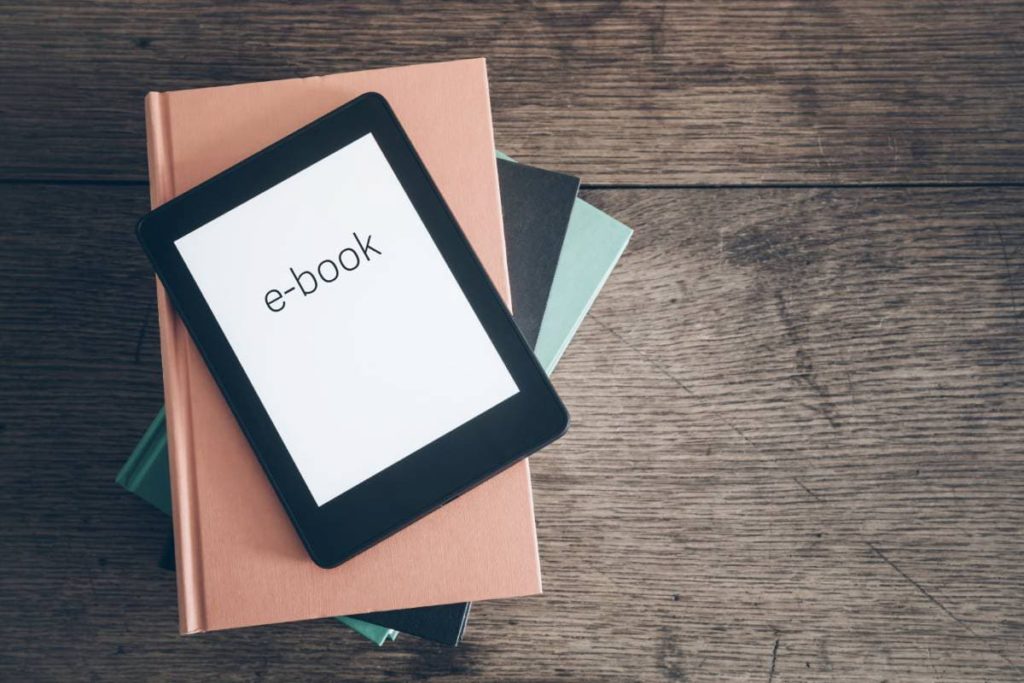Let’s say you’re an author looking to sell your book, but you don’t want to go through the process of taking it to a publisher. Do you need to publish a book to sell it?
You need to publish a book in some capacity to sell it. However, this doesn’t mean you must go through a traditional publishing house. Authors can self-publish their books, with or without copyright, and sell them on various platforms.
This is a complicated question because ‘publishing’ is often defined as making the writing available for another person to read. So technically, however you provide the book to another person, you might have published it. Make sure to consult a lawyer before acting on advice in this article!
It may be possible to sell a book to someone without providing them with the text. For instance, someone can give you money for a product that you will provide to them later. So in this instance you have sold a book to someone without publishing, but that is not the most common situation people are looking for information on.
Take a look at the ways authors can self-publish their work and how they can make money off of their work.

Self-Publishing Can Be As “Official” As Traditional Publishing
Publishing a book is a massive achievement, and whether you go through the traditional method or self-publish, the outcome is the same. Whatever means you use to publish a book, it’s an original piece of writing that you can sell and make a name for yourself.
How You Can Self-Publish Your Book
There are multiple ways to self-publish a book, which include hard-copy, ebook or digital, and audiobook format. In fact, you don’t need to limit yourself, as one author can independently publish all kinds of books or have a version of each available for one book.
This could be an excellent idea to help a self-published author give their work a better chance of being seen.
Physical Book
A physical book is probably the most elaborate book format you can publish, as you’ll need to get into contact with a printer and one or more book shops where you want to sell your work.
You’ll need to pay printers for their time and resources. When you approach a printer, you need to know how many books you want them to print. So before going to the printer, you need to determine the potential interest in your book.
Printing books, unlike audiobooks and ebooks, will cost more money, depending on the quality and quantity of materials you use. For example, a black and white 8.5x 11 cm book of 200 pages would cost around $10.04 to print.
Try a Print-On-Demand Company Instead
You could also approach a print-on-demand agency, which means you don’t need to have a predetermined number of books you want them to print. This could save you money if the book doesn’t sell well.
To save on costs, you can package and ship the books, which also lends itself to a print-on-demand system. Print-on-demand gives the author more control over their work’s details and overall quality.
It also gives your readers a personal relationship with you and your work.
Selling through a bookstore means they get a percentage of all earnings on books sold but a better chance of selling as they potentially get more exposure.
Ebook
Publishing your work on Amazon or Kindle Direct Publish (KDP) allows you to publish your book for free and determine your prices. According to the New York Times, $9.99 seems to be the average cost of a book.
KDP makes your book available for purchase hours after submission. This means no waiting time to start selling, and you get real-time data on who’s purchasing your book or is expressing interest in it.
The lack of mediation when submitting books means you have to ensure that your book is polished, as mistakes could slip under the radar without an editor or moderator. The author gets about 70% of the royalties from ebooks sold, rather than the much smaller fraction they get through a physical book published using a traditional publisher.

Audiobook
As with Kindle, Audible publishes your audiobooks for free, and what you get paid for depends on how long it is. For instance, a 3 to 5-hour audiobook will cost $10 to $20. You can save costs by recording the book yourself, but if you go this route, you must ensure that the recording is high quality.
In a situation where you aren’t able to record your audiobook, there are plenty of professionals willing to do it for you, for a fee, of course. You can find them on sites like Fiverr or UpWork.
Copyrighting a Book
Self-published authors, regardless of their publishing format, benefit from the copyright of their work. Being the copyright owner of a book ensures they have sole ownership of their work, and third parties cannot usually use it without permission.
When you write your book, you likely have an automatic copyright to it due to the Digital Millenium Copyright Act of 1998. This act says you likely automatically own the copyright when you create a work, such as:
- Books
- Videos
- Games
- Artwork
- Pictures
However, there might be times when you want to copyright your book, such as when:
- There’s a question of copyright infringement.
- You want to sue someone who stole your work.
- You need to send a “cease and desist” letter to said person.
You don’t need to go through traditional publishing channels to do this. You simply need to take your request to the US Copyright Office, or the copyright office in the country where you live, and they will record your ownership of the work.
Other Aspects of Self-Publishing a Book
There are a few basic steps to self-publishing, including:
- Conceptualizing a story
- Marketing to readers
- Printing and selling books
It’s essential to note that formal publication is probably necessary when creating a book you intend to sell because the book must be copyrighted, printed, distributed, and sold. These require contracts and legal information, whether agreements between the author and bookstores or the author filing a copyright request.
Writing and Editing Your Book
You naturally want to formulate a compelling and complete story to publish a book. This story probably needs to be unique, original, and fit into a niche in the market.
Your book will likely go through multiple stages of editing. There isn’t a certain number of edits you need to make, nor is there a limit to the number of revisions you can make. You need to make sure, however, that your book has perfect grammar, spelling, and formatting.
Editing is vital when self-publishing. A self-published author can employ the services of an editor. Still, if they decide not to, they will have to be extremely thorough when combing through their manuscript.
Designing a Book and Preparing for Print
Once you’ve edited the text of your manuscript, it’s time to move on to the design of your book, which includes the cover design. You also need to decide whether or not you want illustrations inside the book and determine the actual dimensions and printing requirements.
Artistically inclined authors don’t need to employ the use of a designer, as anyone can design a front cover for a book. Do the research and find out what you want in a cover and what readers find most attractive.
Printing requirements include:
- Formatting
- The kind of paper you want the book to be printed on.
- The number of books you need to be printed.
- The number that will be distributed to particular stores.
Deciding on printing specifications is a crucial step.
A self-published author has to deal with all of the admin that a traditional publisher would handle. Formatting and specifications refer to the dimensions of the book, and the typeface and font size. Authors must have clear and continuous communication with both the bookstores and printers, so they can calculate how many books to supply based on demand.
Conclusion
There is nothing a self-published author can’t do that is done through traditional channels. They’re on the path to success if they research and understand the relationship between cost and product, supply and demand, and have an end goal for their work.

